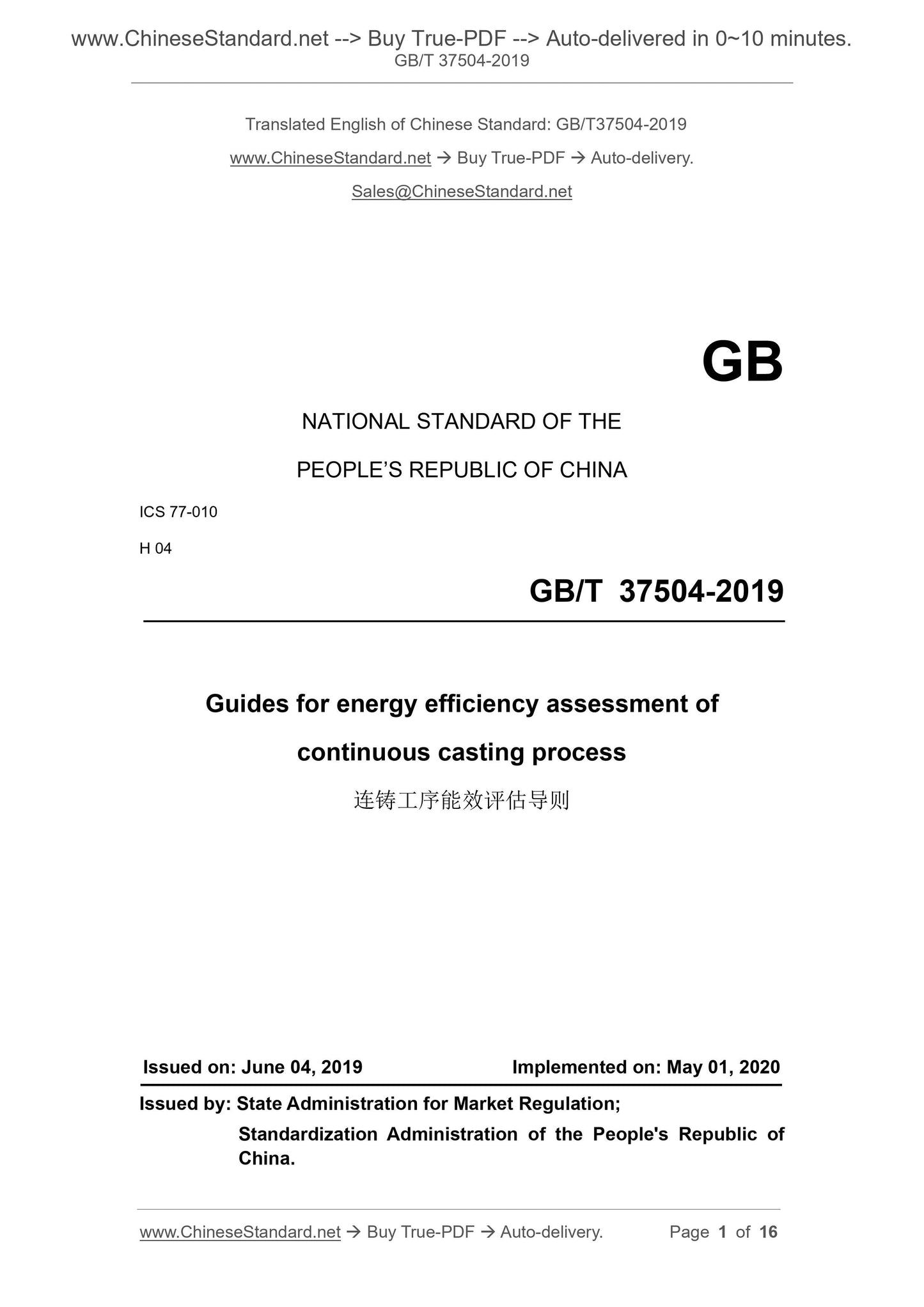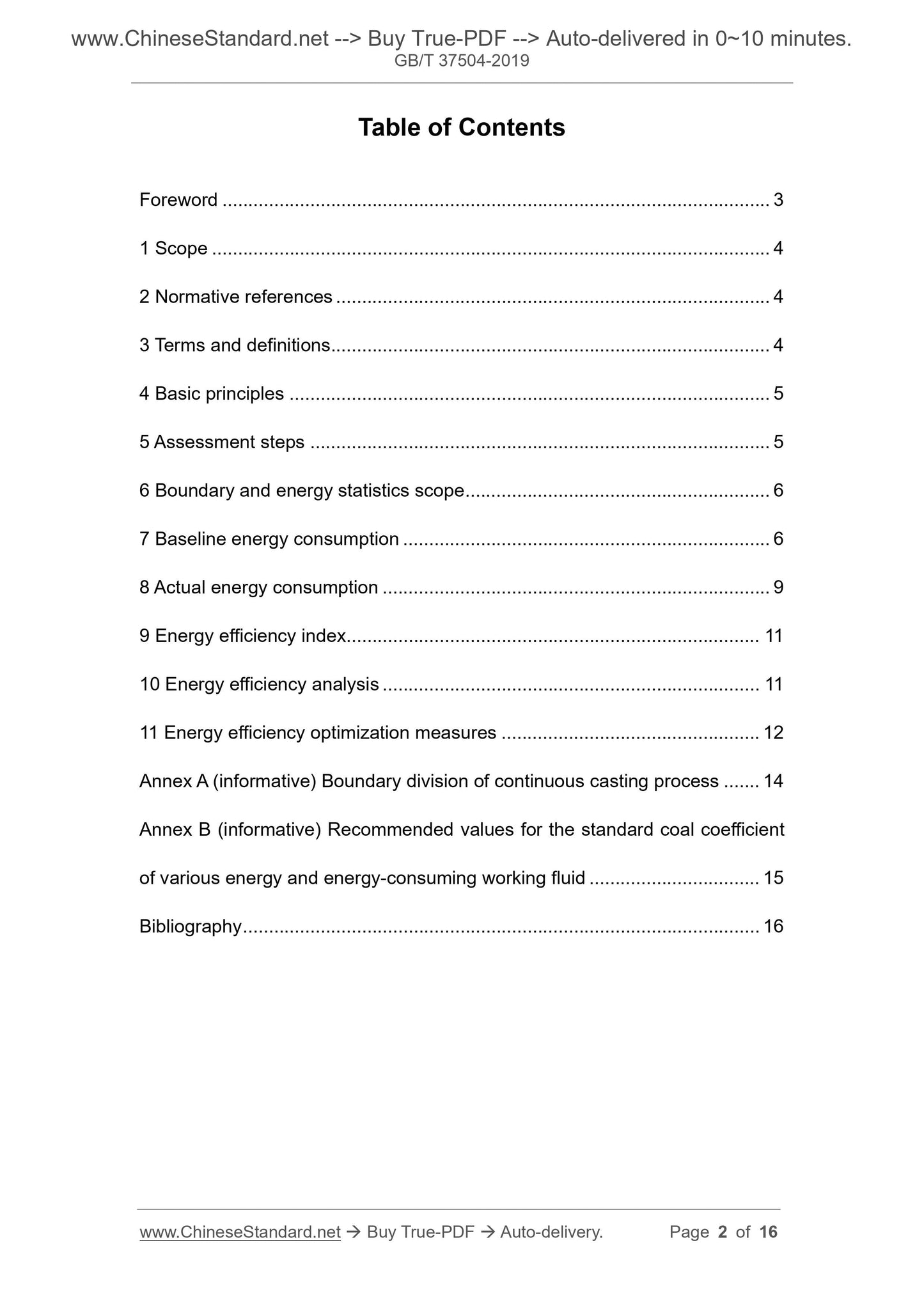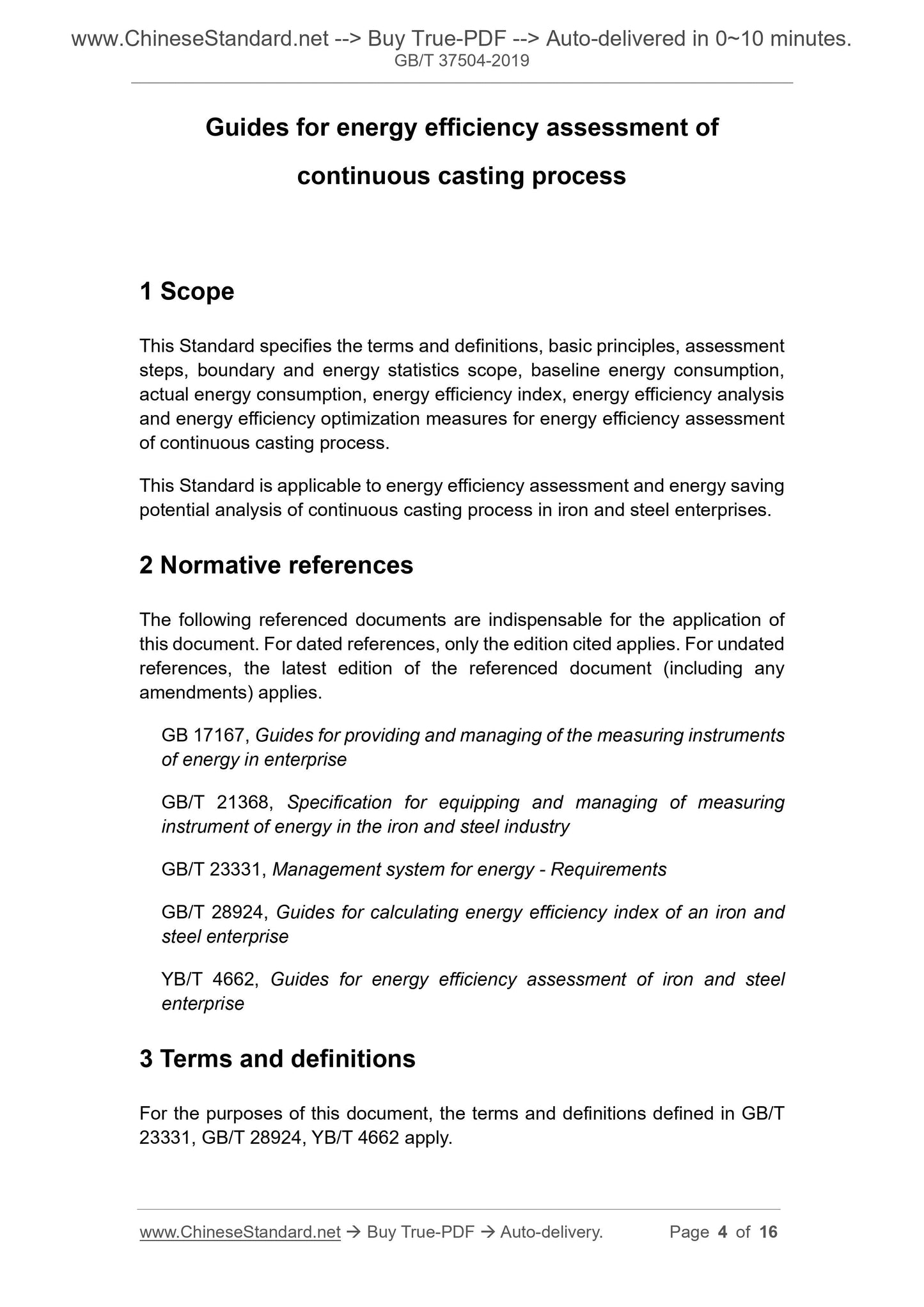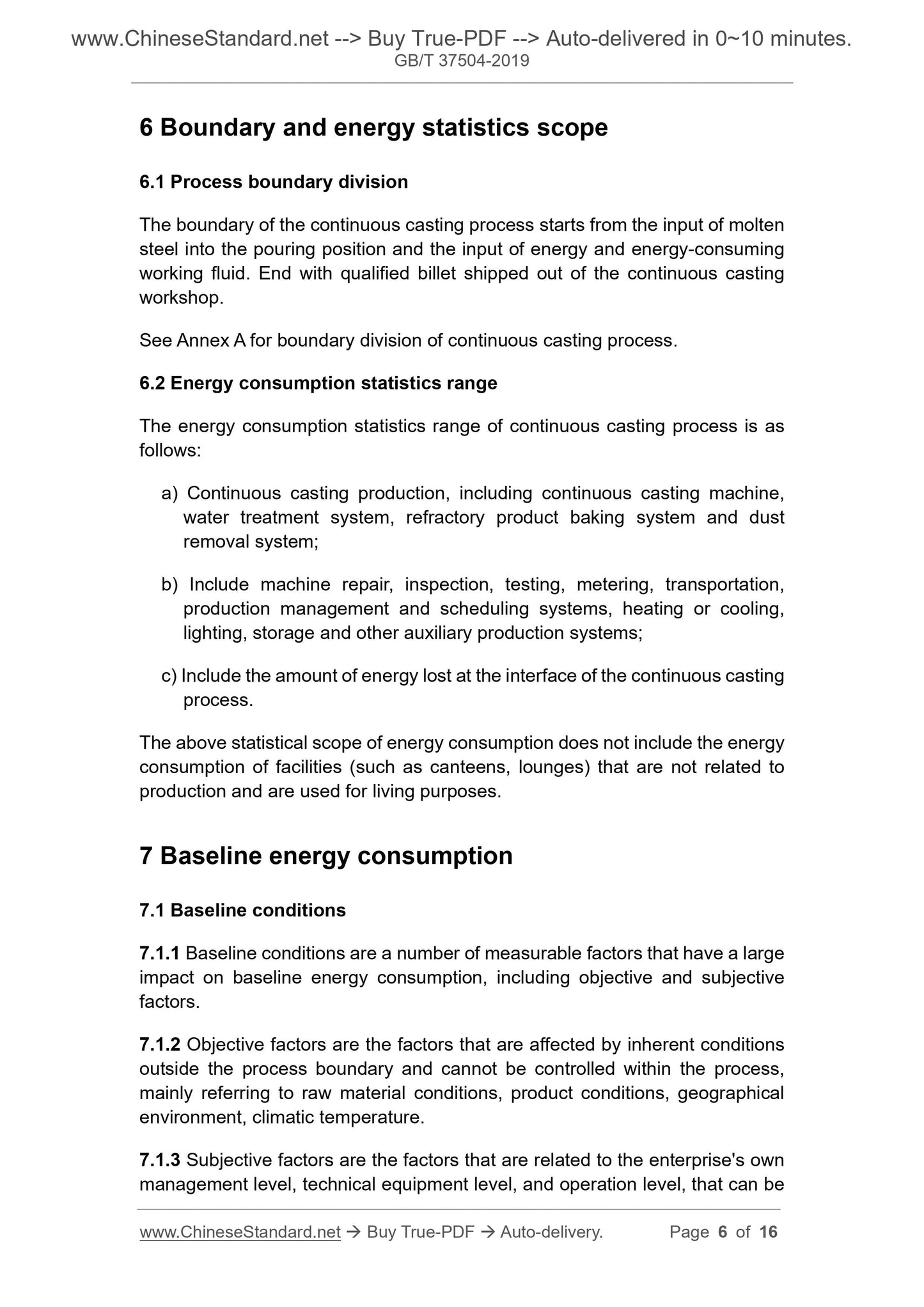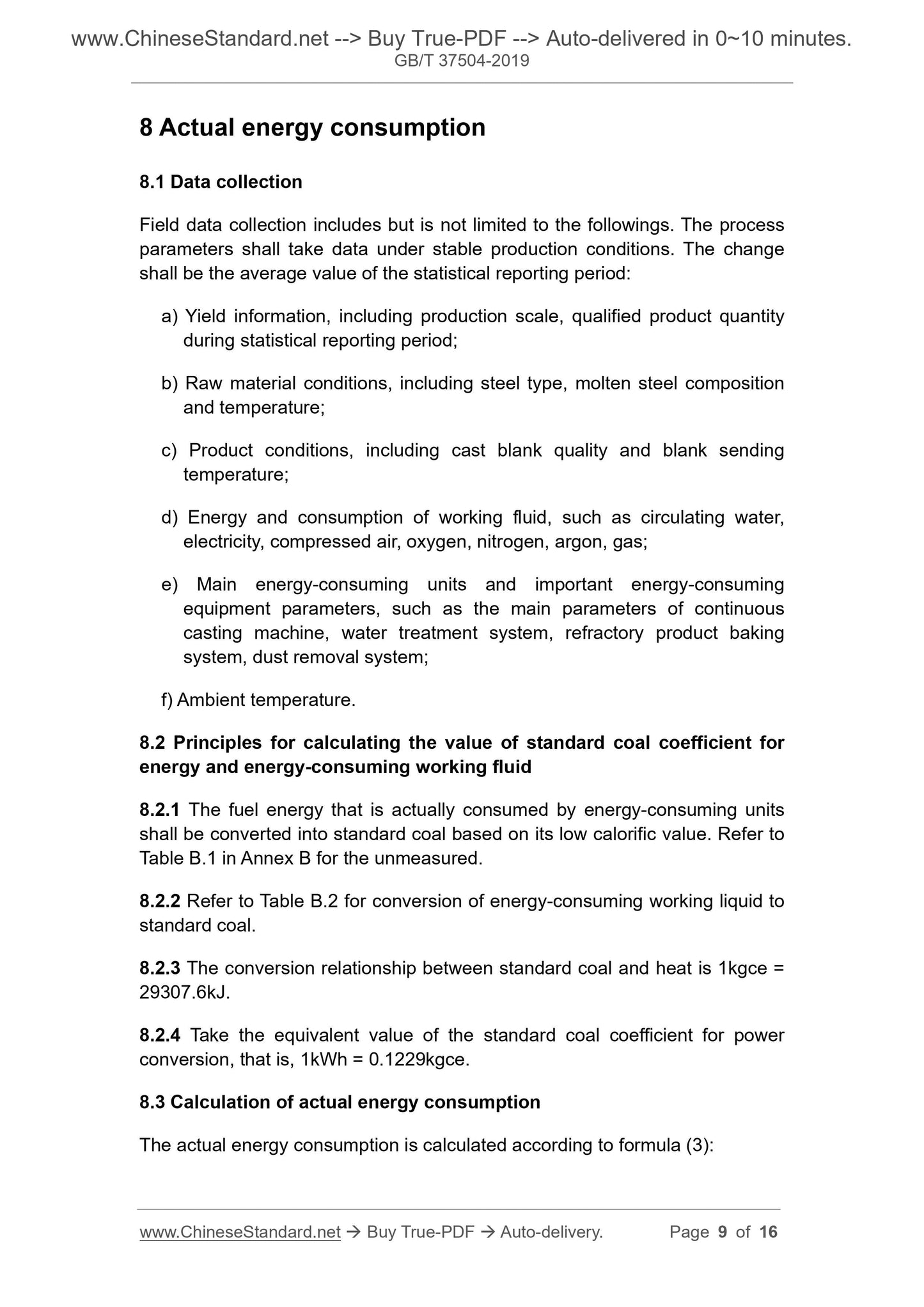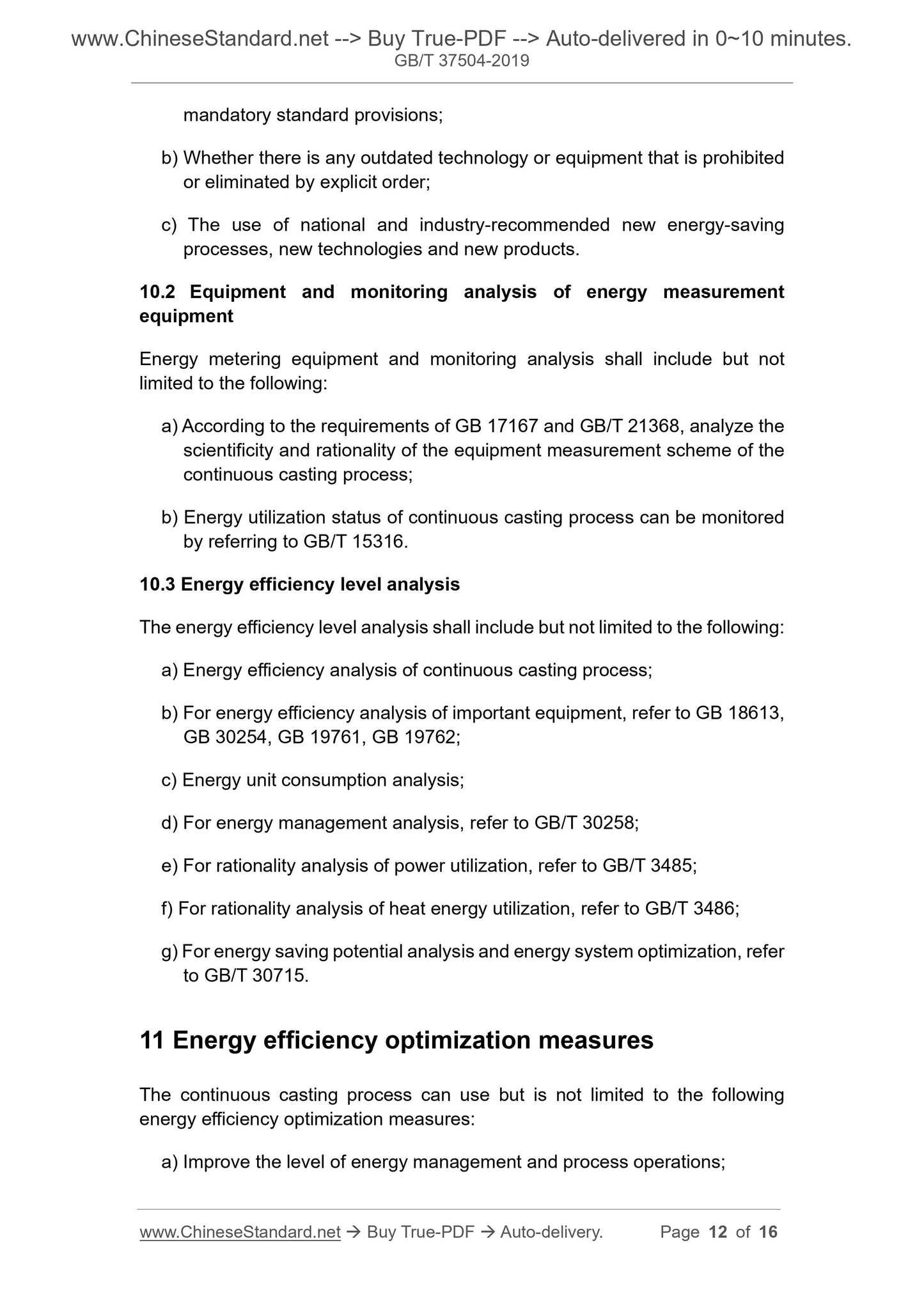1
/
of
6
www.ChineseStandard.us -- Field Test Asia Pte. Ltd.
GB/T 37504-2019 English PDF (GB/T37504-2019)
GB/T 37504-2019 English PDF (GB/T37504-2019)
Regular price
$130.00
Regular price
Sale price
$130.00
Unit price
/
per
Shipping calculated at checkout.
Couldn't load pickup availability
GB/T 37504-2019: Guides for energy efficiency assessment of continuous casting process
Delivery: 9 seconds. Download (and Email) true-PDF + Invoice.Get Quotation: Click GB/T 37504-2019 (Self-service in 1-minute)
Newer / historical versions: GB/T 37504-2019
Preview True-PDF
Scope
This Standard specifies the terms and definitions, basic principles, assessmentsteps, boundary and energy statistics scope, baseline energy consumption,
actual energy consumption, energy efficiency index, energy efficiency analysis
and energy efficiency optimization measures for energy efficiency assessment
of continuous casting process.
This Standard is applicable to energy efficiency assessment and energy saving
potential analysis of continuous casting process in iron and steel enterprises.
Basic Data
| Standard ID | GB/T 37504-2019 (GB/T37504-2019) |
| Description (Translated English) | Guides for energy efficiency assessment of continuous casting process |
| Sector / Industry | National Standard (Recommended) |
| Classification of Chinese Standard | H04 |
| Classification of International Standard | 77.010 |
| Word Count Estimation | 11,133 |
| Date of Issue | 2019-06-04 |
| Date of Implementation | 2020-05-01 |
| Issuing agency(ies) | State Administration for Market Regulation, China National Standardization Administration |
Share
